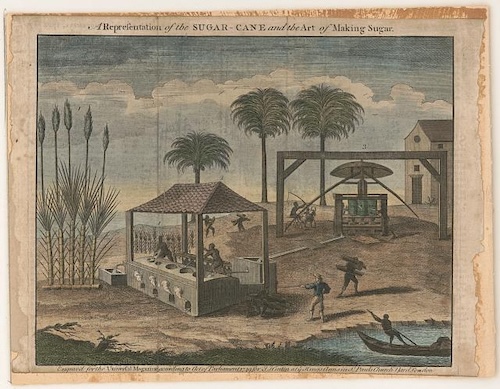The triangular trade describes a system of trade between three regions. During the colonial period, this system helped European countries and their colonies make money by exchanging goods across the Atlantic Ocean. One of the most well-known examples of triangular trade connected Europe, West Africa, and the Americas. European ships carried manufactured goods to Africa. In exchange, African traders sold enslaved people, who were transported to the Americas and forced to work on plantations. In the Americas, merchants used profits from slave sales to buy raw materials like sugar, tobacco, and cotton. These goods were then sold in Europe for a profit, and the cycle continued.
New England colonies were also part of their own version of the triangular trade. Merchants from New England sailed to the Caribbean to buy molasses and mahogany, which were important products from islands like Jamaica and places in Central America. The molasses was turned into rum, which was sold in Africa in exchange for enslaved people. These enslaved people were then taken to the Americas and sold again, helping merchants buy more goods for trade.

It is important to understand that the triangular trade was not a single trade route, but a trading system that connected distant markets. Ships did not always travel in a perfect triangle, but the overall pattern helped merchants make money by supplying goods people wanted but could not produce themselves. Sadly, much of this trade system depended on the transatlantic slave trade, where millions of Africans were forced into slavery, suffering terrible hardship so that European countries could grow wealthier.
